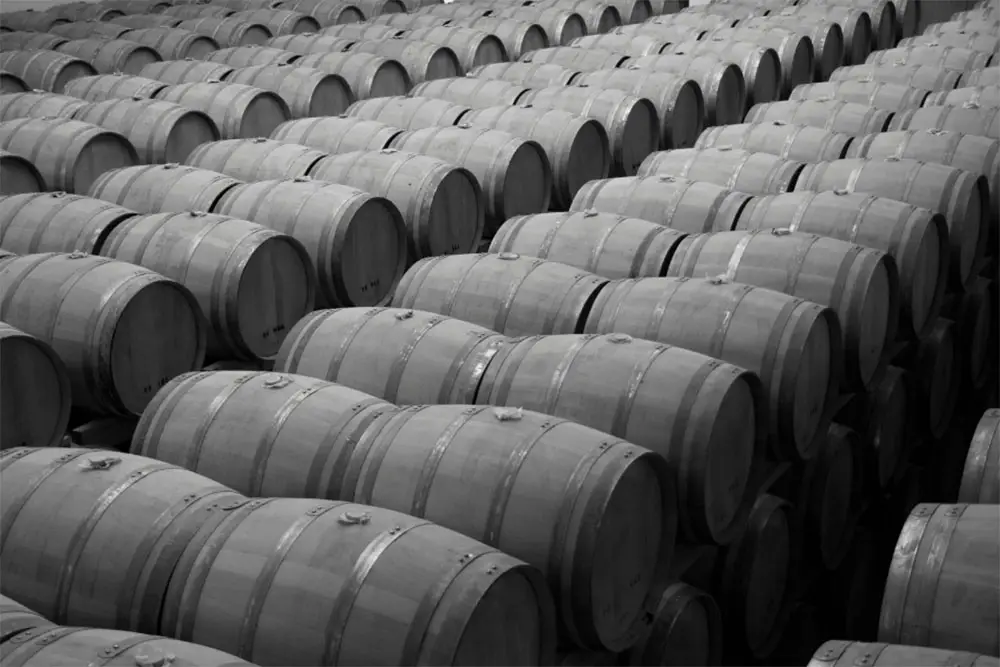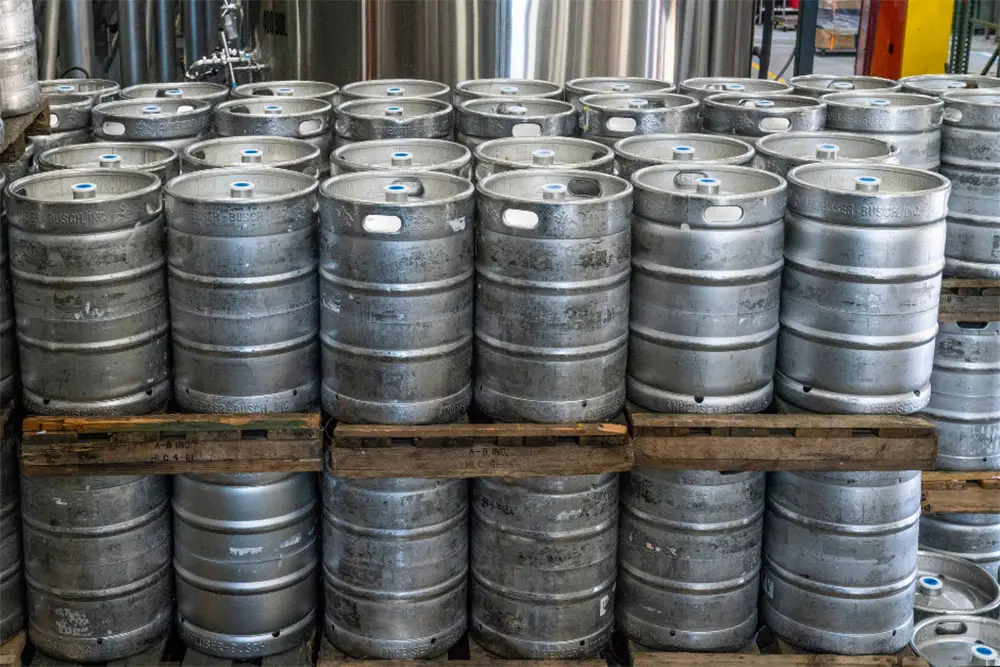If you are hosting a get-together, having plenty of beverages on hand is a must. Upon realizing that you have a tapped keg leftover from a previous gathering, you may be wondering whether it is suitable to serve to your guests, you don’t want it to leave them with an odd taste in their mouth.
A keg is an essential resource that is used to store and transport beer. Having an understanding of how long a keg lasts is important because it will ensure that you are only serving fresh and tasty beer.

BEER DROP: Boxes of beer from Award-winning microbreweries → Join The Club
The longevity of a keg is going to be influenced by several factors ranging from the type of beer that is stored inside it, the temperature of the environment that it is stored in, and the dispensing system that it is equipped with. We have delved into each of these factors in more detail in our guide below.
Typically, the shelf life of a keg is around 2 to 4 months. Remember that this time frame is usually calculated from the time that the keg is filled. Some kegs will have an expiry date printed on the label.
How you define freshness is also going to influence how long you keep and continue to use a keg. For example, some may notice a change in the taste of it sooner than others.
Storage Temperature – Why Is It Important?
The temperature that the keg is stored at is going to affect how long it lasts, hence why it is super important to ensure that the temperature of the environment that it is stored in is correct.
The majority of kegs need to be stored at a temperature of 38 degrees Fahrenheit. Try not to let it exceed this temperature or drop too much below it. If you are likely to struggle to maintain this temperature, you will likely benefit from investing in a kegerator.
As implied, a kegerator provides a convenient way of storing a keg and they will retain the required temperature.
Now you may be wondering what the implications are of storing your keg in high temperatures along with the problems associated with a temperature that is too cold.
Storing your keg at a temperature that is too high, e.g 50 degrees Fahrenheit or more can cause it to become stale.
This is because it will start to oxidize at a faster rate. There is also a risk that the beer inside the keg may begin to foam more than normal. Another reason why you should avoid storing your beer at a high temperature is because doing so can lead to an accumulation of bacteria. The presence of bacteria can spoil the taste and lower the quality of the beer.
On the flip side of this, there are also issues associated with a keg that is too cold. You should avoid storing your keg in an environment where the temperature is 28 degrees Fahrenheit or lower because it is likely to freeze.
It is worth noting that there is a risk of a frozen keg bursting. At a lower temperature, the beer is likely to keep its carbonation. As a result of this, you may not be able to enjoy the usual taste and aromas of your favorite beer.
Ultimately, it is important to maintain a consistent temperature, rather than going to extremes. Also, if you have multiple kegs, you need to make sure that you use them in the correct order, i.e first in first out.
The Different Types Of Beer And Their Shelf Life
Although the type of beer that you enjoy drinking doesn’t have any huge impact on the functionality of the keg, the shelf life can differ between varieties, with some lasting significantly longer than others.
As expected, unpasteurized beer has not endured the pasteurization process and as a result, it retains many of its natural characteristics. This type of beer is expected to last for a maximum of 8 weeks from the time that it is added to the keg.
Pasteurized beer has been heat-treated to prevent the growth of microorganisms that can spoil the beer. This process prolongs the life of the beer and because of this, pasteurized beer can last up to 4 months in a keg.
How Does The Style Of The Pump Affect The Shelf Life Of The Keg?
Along with the temperature, the style of the pump is going to affect how long the keg lasts. A pump is needed to transport the beer from the keg to your glass and the two most common types are a CO2 pump or a manual pump and there are benefits associated with each.

A CO2 Pump
This type of pump tends to be the most popular option because it is more effective in preserving the taste of the beer. By applying pressure, a CO2 pump essentially forces the beer to come out of the keg.
Unlike a manual pump, a CO2 pump does not use oxygen. The taste of oxidized beer has a noticeably different taste. Instead, this pump uses carbon dioxide which is going to retain the freshness and taste of your beer.
Impressively, a keg that is equipped with a CO2 dispensing system can last for around 3 months and potentially longer. When stored in optimal conditions, this figure may double.
A Manual Pump
The second option is a manual pump. The setup of this pump is not quite as complex as that of a CO2 pump. Simply affix the pump to your keg and then you are ready to go.
It is worth noting that a manual pump uses oxygen from the air which creates the necessary pressure to pump the beer into your glass. Although a manual pump works well, there is a risk of the oxygen altering the taste and affecting the freshness.
If you are looking for an affordable pump that is fairly easy to set up and use, you may opt for a manual pump. However, if you have a larger keg or you just want to store your beer for longer a CO2 pump is most definitely the best option.
What Are The Signs Of A Bad Keg?
So what are the signs that the beer inside your keg has gone bad? We have identified a few below.
Difference In Appearance
You will likely notice that bad beer looks different from fresh beer. As we have touched upon previously, it is likely to be abnormally foamy and it may also start to look rather cloudy.
An Odor
Bad beer can also be identified by its smell. If the beer has started to emit a sweet or sulfuric odor, it has exceeded its shelf life. While a bad beer isn’t necessarily going to harm you, I’m sure you would agree that fresh beer not only smells but tastes a whole lot better.
An Unpleasant Taste
Perhaps the most obvious sign of gone off beer is evident in the taste. Beer can have a sweet or bitter taste depending on the type that you enjoy drinking, however, if you take a sip and find that it is sweeter than normal with quite a prominent bad taste, it is more than likely that your keg has gone bad.
How To Keep Your Keg Fresh
Now that we have identified the signs of a bad keg, you may be looking for ways of keeping it fresher for longer. We have identified some of our top suggestions which we believe are the most effective below.
Store It At The Right Temperature
As I’m sure you are aware by now, storing your keg at the right temperature is of utmost importance. Try and store your keg in a dark area such as a garage, basement, or even a closet. Also, keep it out of the way of light.
If you are going to be keeping your keg inside a kegerator you must make sure that the pressure and temperature settings are correct, because this will stop it from becoming very foamy.
Make Sure That Your Keg Is Fresh When You Buy It
If you purchase a keg that is almost reaching or exceeding its sell-by date, then you are going to have much less time to enjoy it.
Remember that some kegs will have an expiration date stated on the packaging and this will provide you with a clear guide as to when it should be used by.
Select The Correct Pump
using the correct pump will help to prolong the freshness of your keg. Although a manual pump is effective in its purpose, a CO2 pump dispenser is going to keep your keg fresher for longer.
Can You Tap A Keg Twice?
Tapping refers to the process of opening a new keg via the tap. Unless you are catering to a large crowd, it is unlikely that your keg will be used on a single occasion. As such, you may be curious as to whether it is possible to tap a keg twice.
Simply put, a keg can be tapped twice but it will depend on the pump that you are using. The majority of kegs already have CO2 inside them, therefore if you are going to be using a CO2 pump, you can tap it as and when desired. This is because you are not adding an unknown gas to the keg.
If you are going to be using an O2 pump or a manual pump, you will only be able to tap your keg once.
You must remember that tapping your keg more than once is only going to be doable if you store it in the correct conditions. If it is stored at the temperature that we have stated above, and tapped correctly on the first attempt, you will be able to get plenty of use out of it.
Final Thoughts
As you can see there is not a set amount of time that a keg will last, because there are several factors that are going to contribute to its longevity. Generally, beer that is kept in a keg will stay fresh and taste the same for as long as 4 months, beyond this time, the differences are likely to become more noticeable.
To enhance the longevity of your keg you should try and adhere to the factors that we have recommended above. Remember that any sudden drop or increase in the temperature can also impact the beer inside the keg.
A keg that remains fresh for longer is also going to be more cost-effective for you. You aren’t going to have to splash out on a new one each time you are expecting guests. Aside from this, you aren’t likely to receive a lot of complaints concerning stale-tasting beer either.
